 Monument to the Revolution of the People of Moslavina, Podgarić. Creative Commons
Monument to the Revolution of the People of Moslavina, Podgarić. Creative Commons After World War II, the newly formed Socialist Federal Republic of Yugoslavia launched ambitious projects to commemorate both the tragic losses and the extraordinary resistance that had taken place during the war. Yugoslavia had been home to one of Europe's largest and most significant anti-fascist movements, where Partisan fighters, severely outnumbered, waged open and sustained armed resistance against Axis occupation—a scale and visibility unmatched elsewhere on the continent. Across the sites where these struggles unfolded, monuments and memorial complexes—known as spomeniks—were erected as enduring markers of collective sacrifice, shaping and preserving collective memory.
Now located in six successor states, these spomeniks embody both the heroic struggle for freedom and the state's vision of a unified socialist society, while standing as striking examples of sculptural modernism. Yet much of the Western fascination with these monuments tends to dwell on their bold, futuristic forms—treating them as curious relics or oddities—while overlooking their deep historical, ideological, and political significance.
The devastating consequences of World War II created a profound rupture deeply felt in art, inspiring efforts to find new forms of expression that could reflect this break. The catastrophe quickly resonated within the art world, which sought innovative ways to respond. Sculpture, in particular, was strongly influenced, as memorials emerged worldwide to honor traumatic events—possibly inspired by the Institute of Contemporary Arts in London's 1952 competition for The Unknown Political Prisoner memorial.
Though the monument commemorating all unknown victims of World War II was never built, the competition served as a testing ground for contemporary visual languages. In this context, post-war Yugoslavia's unique socio-political environment fostered rapid monument construction. Under Josip Broz Tito's leadership, the country undertook one of the most extensive efforts to use monuments as tools to shape a new collective identity—an ambition echoed in every preserved spomenik.
Today, following the dissolution of the common state, many of these monuments stand neglected—sidelined by historical revisionism, shifting political agendas, and an eroding collective memory. Here, we take a closer look at some of the most striking revolutionary memorials of Socialist Yugoslavia.
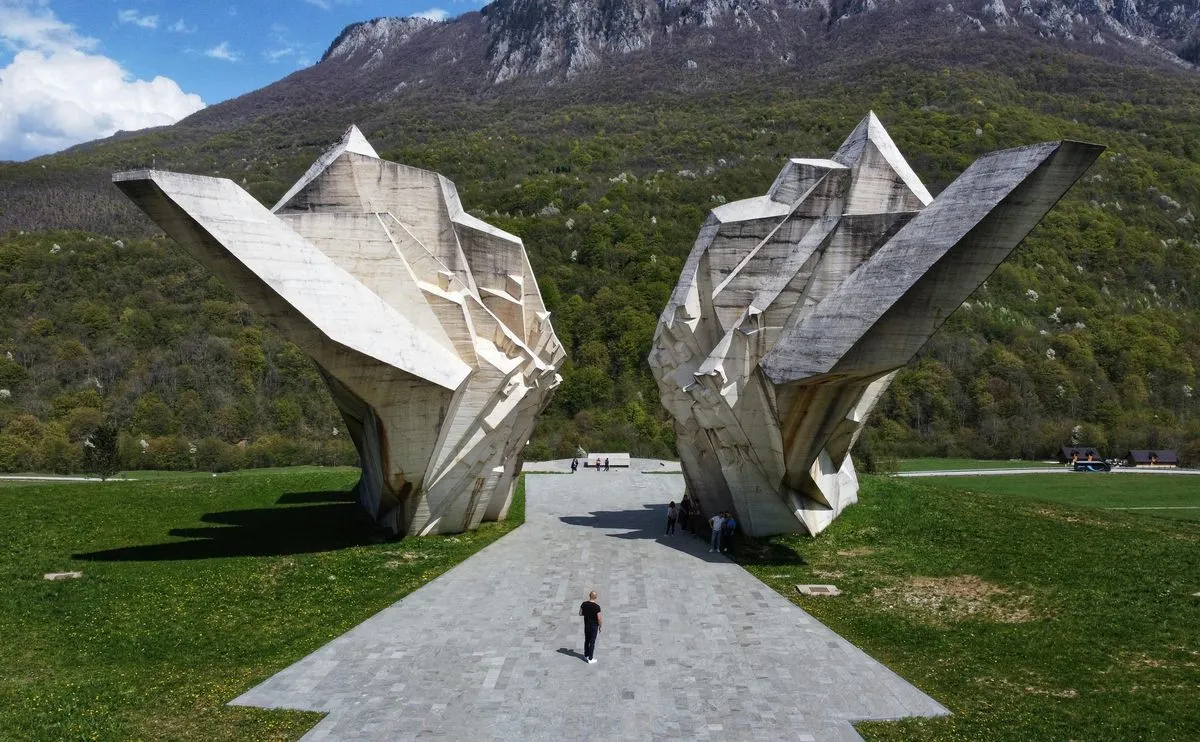
Located in Bosnia and Herzegovina, this monument commemorates the valiant Partisan fighters who battled against overwhelming odds during one of the most pivotal confrontations of World War II in Yugoslavia. Sculptor Miodrag Živković's design, chosen by Tito himself, is striking for its bold, angular concrete forms that soar upward, symbolizing resilience and sacrifice. The monument's dynamic shapes evoke the wings of victory but also the fractured landscape of war, creating a powerful visual metaphor. Beyond its monumental scale, the site functions as a space for reflection, nestled amid the rugged terrain where the actual battle unfolded, grounding the abstract forms in historical reality where lives were lost and hopes were forged.
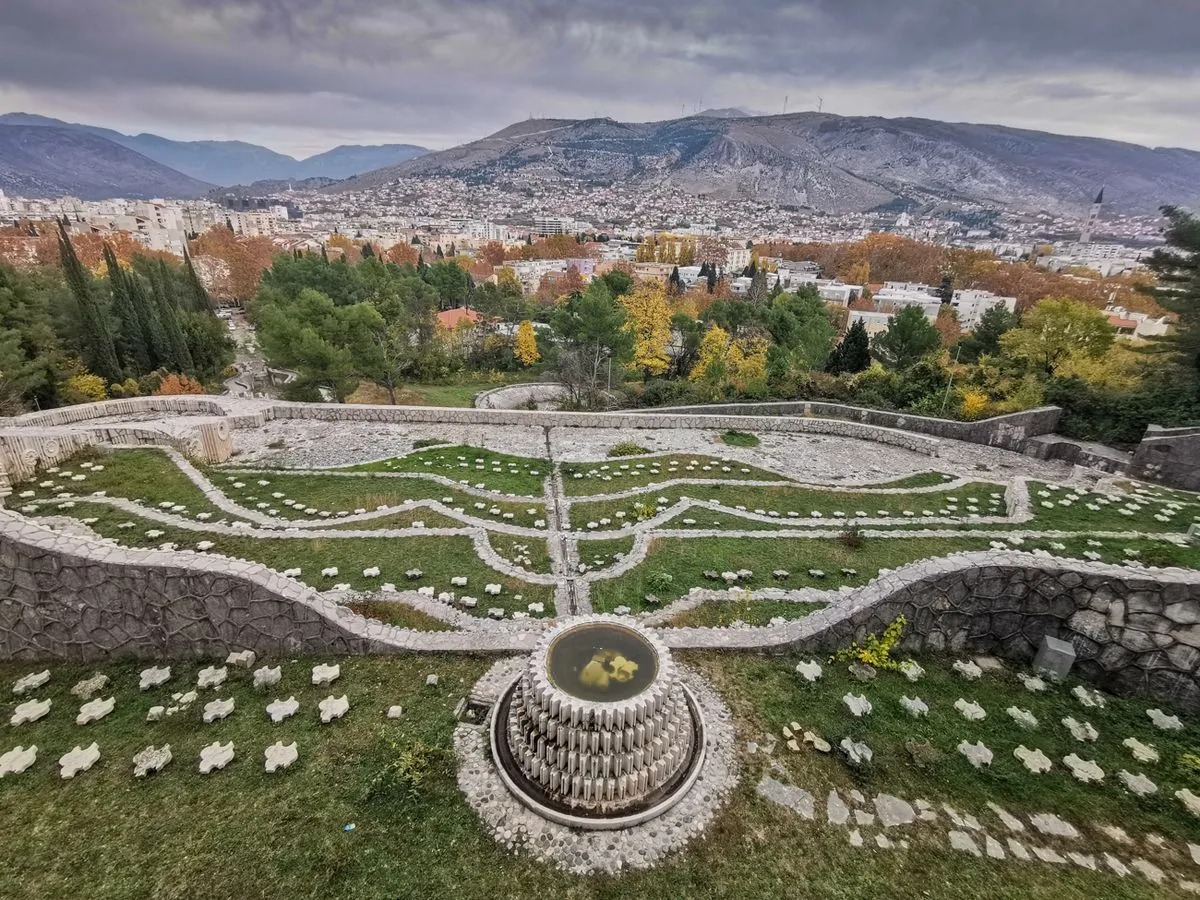
Designed by architect Bogdan Bogdanović in 1965, this cemetery is a profound meditation on memory and unity. Deliberately stripped of any national, religious, or political markers, the site emphasizes universal remembrance. Reflecting Bogdanović's inspiration from ancient forms and cosmological symbolism., the cemetery's organic stone forms echo ancient tombs and megaliths, blending sculpture and landscape into a seamless whole. It commemorates fallen World War II Partisan soldiers buried here, explicitly conceived as a "city of the dead" facing the "city of the living" to remind Mostar of the sacrifices made. Yet after decades of neglect and decay, the cemetery now faces regular attacks from organized neofascist groups determined to destroy both the necropolis and everything it represents. In 2022, hundreds of stone flowers that bore the names of the anti-fascist fighters, their places of birth, and the places and years in which they were executed were smashed to pieces.
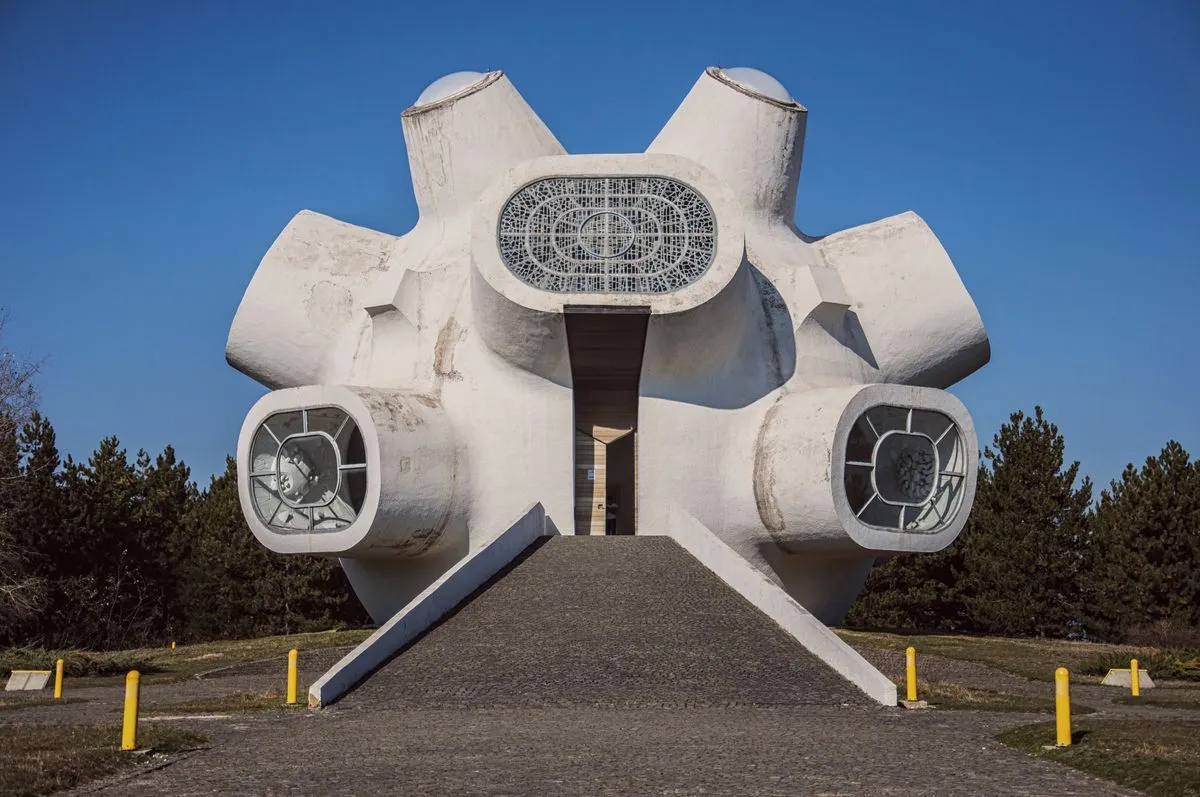
Known locally as Makedonium, this futuristic structure was completed in 1974 in North Macedonia to commemorate the Ilinden Uprising of 1903 and the Partisan fighters of World War II. Though plans for a memorial dated to the 1950s, the project gained momentum with Tito's planned visit to Kruševo. The abstract geometric shapes of concrete, steel, and glass evoke a starburst or explosion, symbolizing the explosive spirit of rebellion and freedom. Its design by Jordan and Iskra Grabul combines brutalist aesthetics with local Macedonian symbolism, bridging past and present struggles. Situated near Kruševo in North Macedonia, the memorial stands as a beacon of national pride and collective memory, drawing visitors into a complex narrative of resistance and identity.
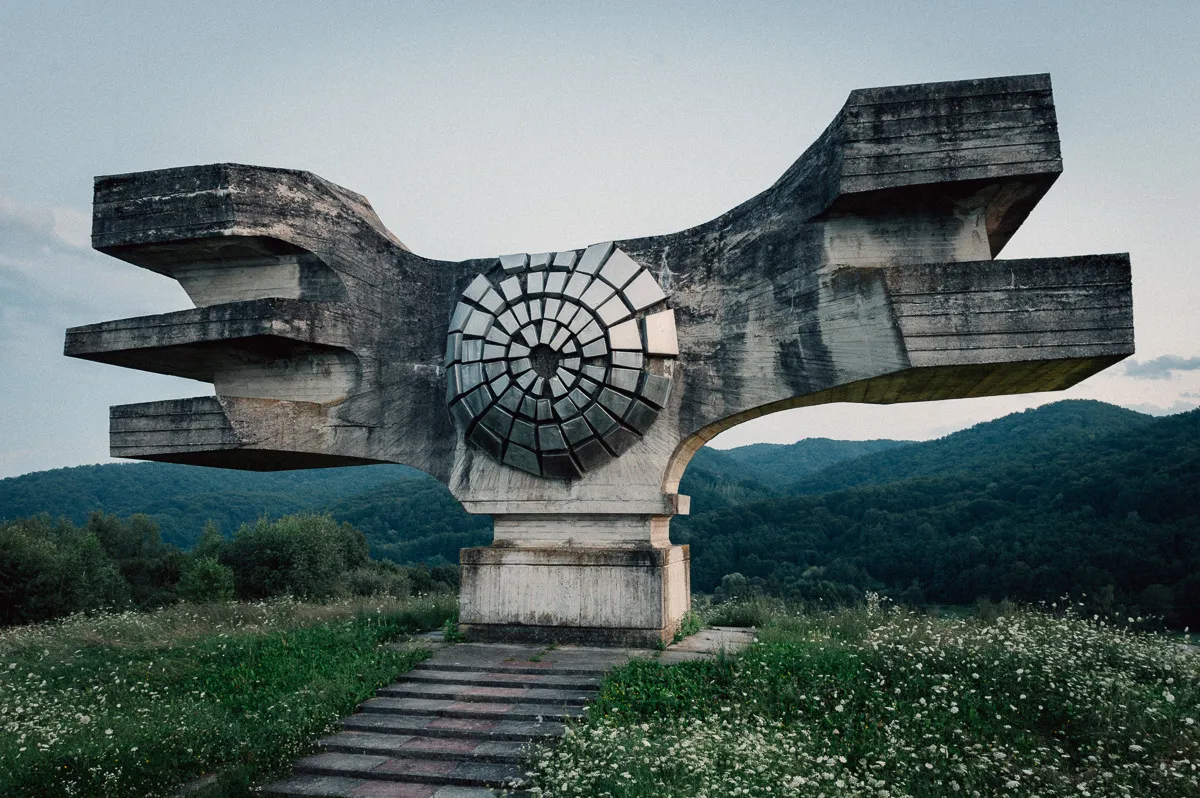
This monumental structure, designed by Dušan Džamonja and completed in 1967, with artist Vladimir Veličković contributing to the landscape design, commemorates the local population's uprising against fascist occupation during World War II. The abstract, wing-like concrete forms evoke both flight and freedom, dominating the landscape with their powerful presence. The spherical "eye" at the monument's center, clad in aluminum panels, suggests vigilance and remembrance. While the original site plan included intricate pathways and landscaping to complement the monument's symbolism, much of this was simplified, leaving the sculpture as the dominant feature that continues to inspire awe and reflection. Although initial plans included intricate pathways, the realized monument now stands largely isolated.
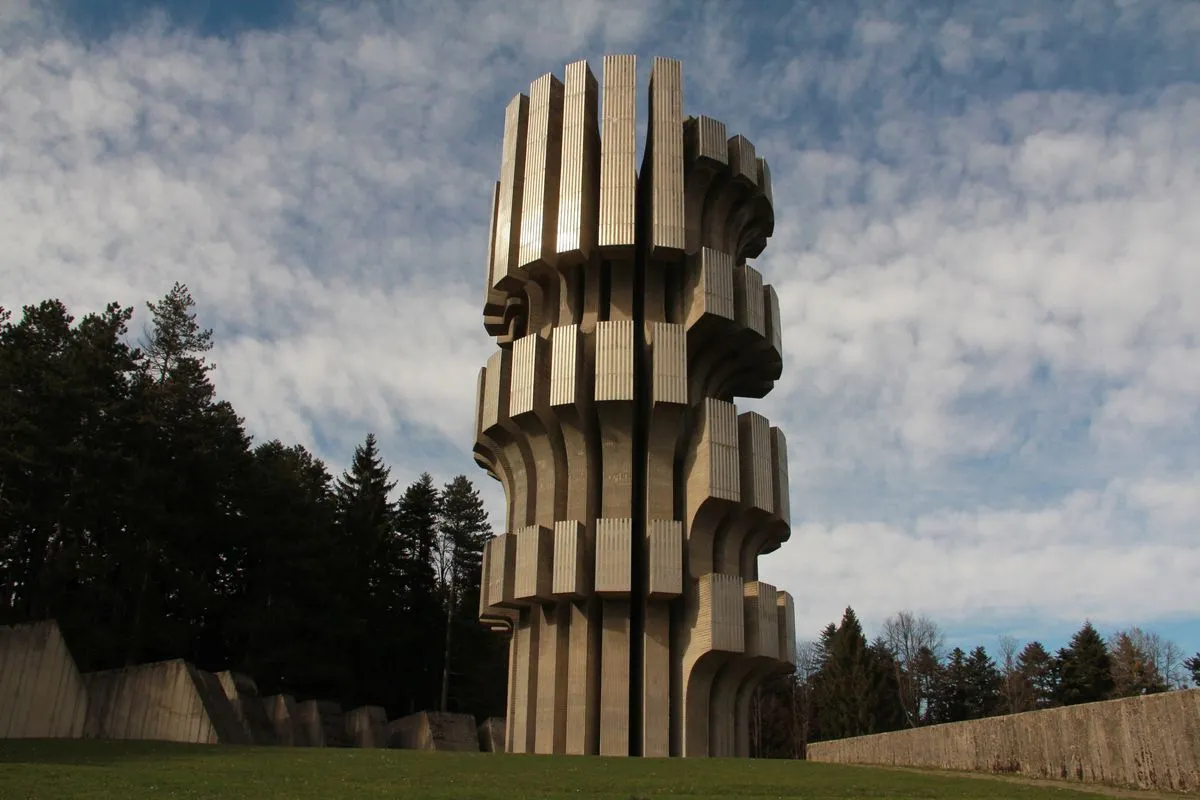
Built in 1972 in Bosnia's Kozara National Park, the Monument to the Revolution is another work by Dušan Džamonja. It honors Partisan fighters and civilians who perished during the 1942 Kozara Offensive. Džamonja designed a towering cylindrical form marked by deep grooves and vertical segments, playing with light and shadow to evoke struggle and endurance. The complex includes a museum and a memorial wall inscribed with names, grounding the abstract monument in personal histories. The site's serene natural surroundings contrast with the monument’s brutalist forms, creating a space where visitors can contemplate both sacrifice and resilience.
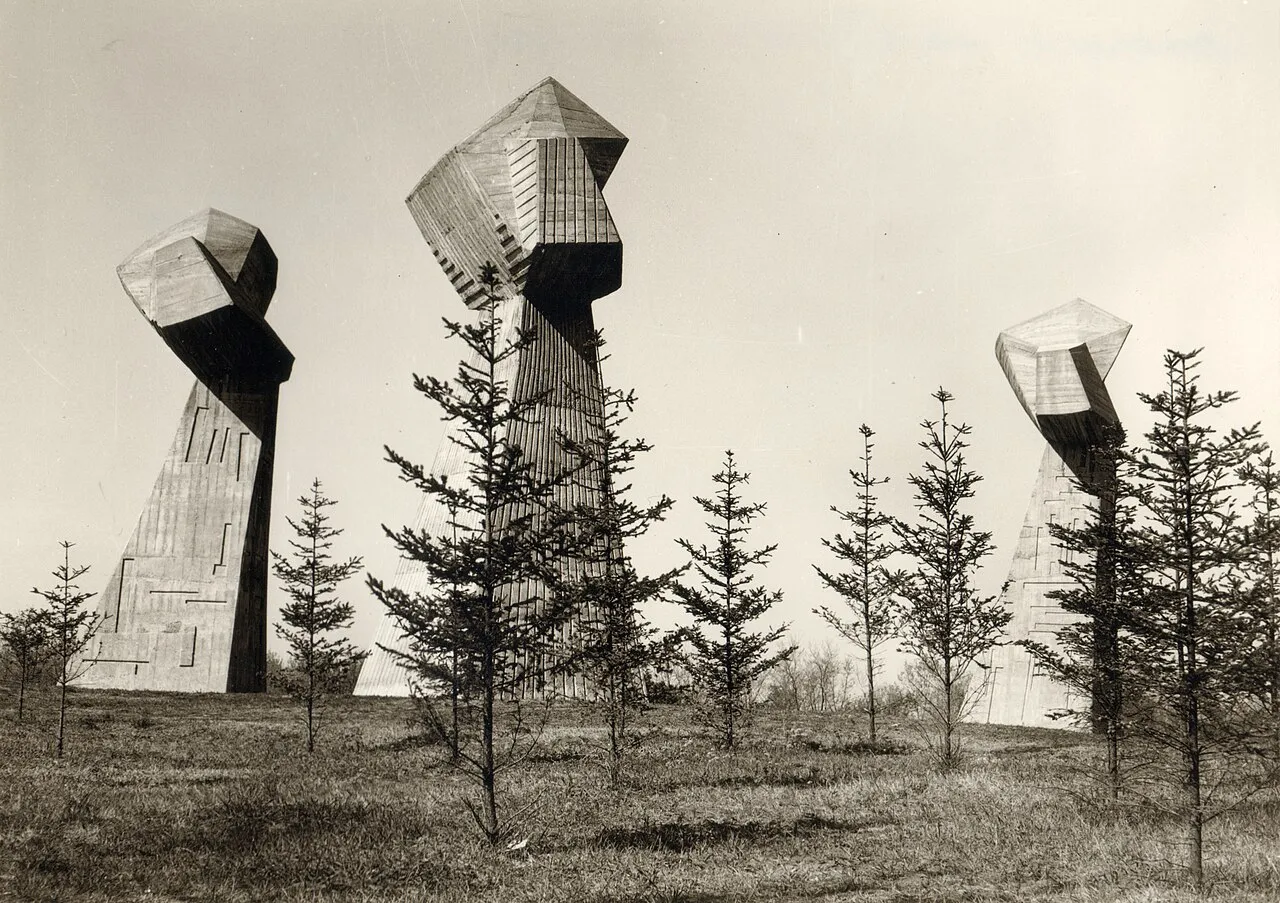
At Bubanj Memorial Park near Niš, three massive concrete fists rise defiantly into the sky, a powerful tribute to more than 10,000 Serbian, Jewish, and Roma victims executed at the Nazi concentration camp known as Red Cross. Designed by Ivan Sabolić and unveiled in 1963, the sculpture captures the spirit of resistance—each fist representing men, women, and children who perished on the site. The surrounding memorial complex includes an open-air amphitheater and a series of carved marble reliefs depicting scenes of suffering, uprising, and solidarity.
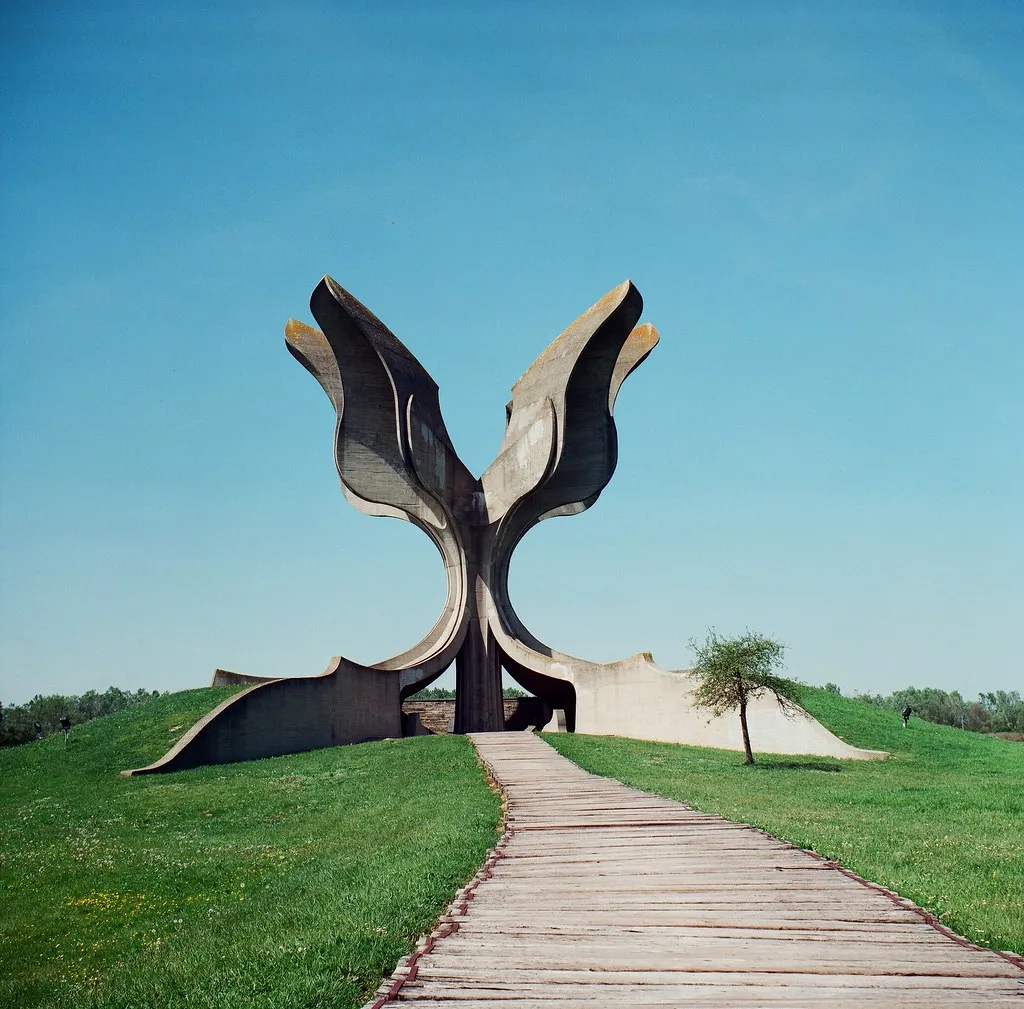
Bogdan Bogdanović's Stone Flower, completed in 1966, stands at the site of the former Jasenovac concentration and extermination camp in present-day Croatia—one of the most notorious death camps of World War II, operated by the Ustasha regime. The soaring concrete structure, shaped like a blooming flower, rises from a reflective pool and evokes a powerful duality: a symbol of renewal and hope set against a history of unimaginable brutality. Because so little physical trace remained of the camp's buildings and graves, Bogdanović used earth mounds and hollows to mark their locations, giving physical form to absence and turning the landscape itself into a memorial. The design's organic form contrasts with the brutal history it commemorates, inviting visitors to remember victims while contemplating the enduring resilience of life.
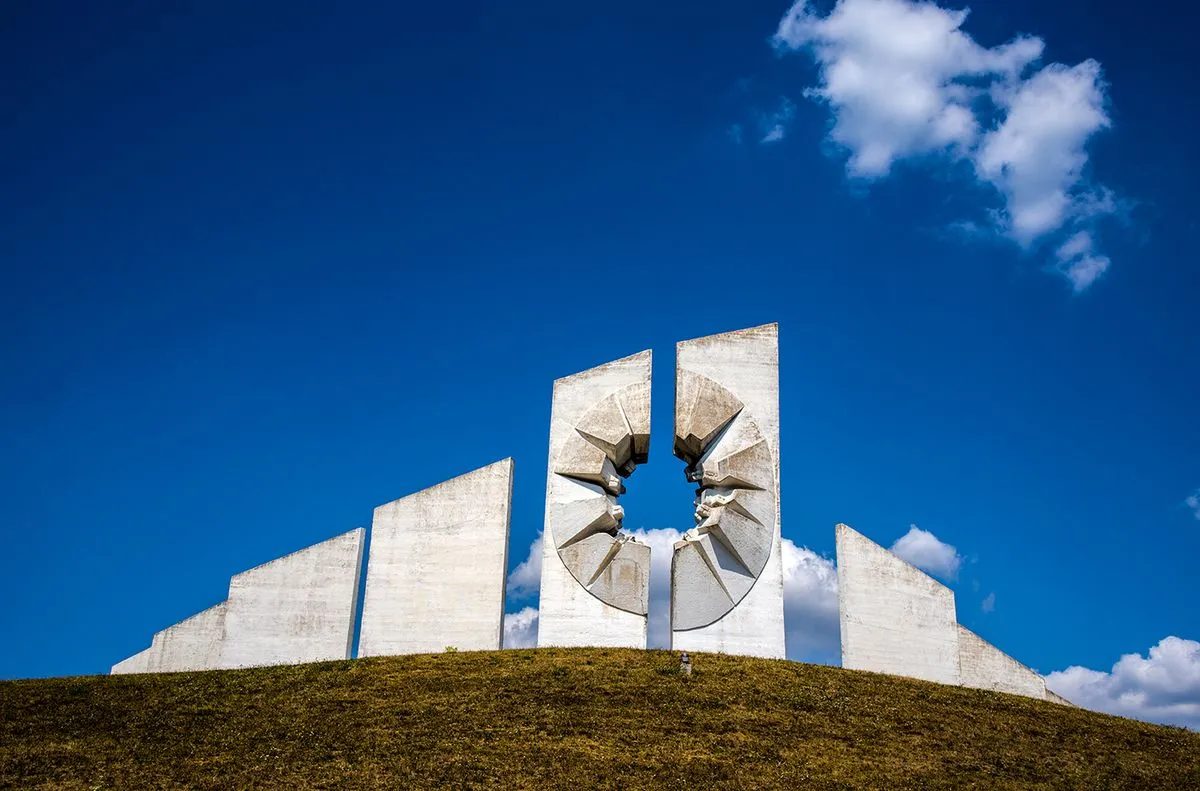
This memorial complex near Užice, Serbia, honors Partisan fighters who died during the Battle of Kadinjača in 1941, a critical defense against Nazi forces. The site evolved from a single monument designed by Stevan Živković in 1952 to include a pyramid-shaped structure, a museum by Aleksandar Đokić, an amphitheater, and pylons with abstract sculptures. One notable element resembles a bullet hole carved into stone, symbolizing violence frozen in time. The complex's layered architecture and sculpture create a narrative space where history, memory, and sacrifice intersect.